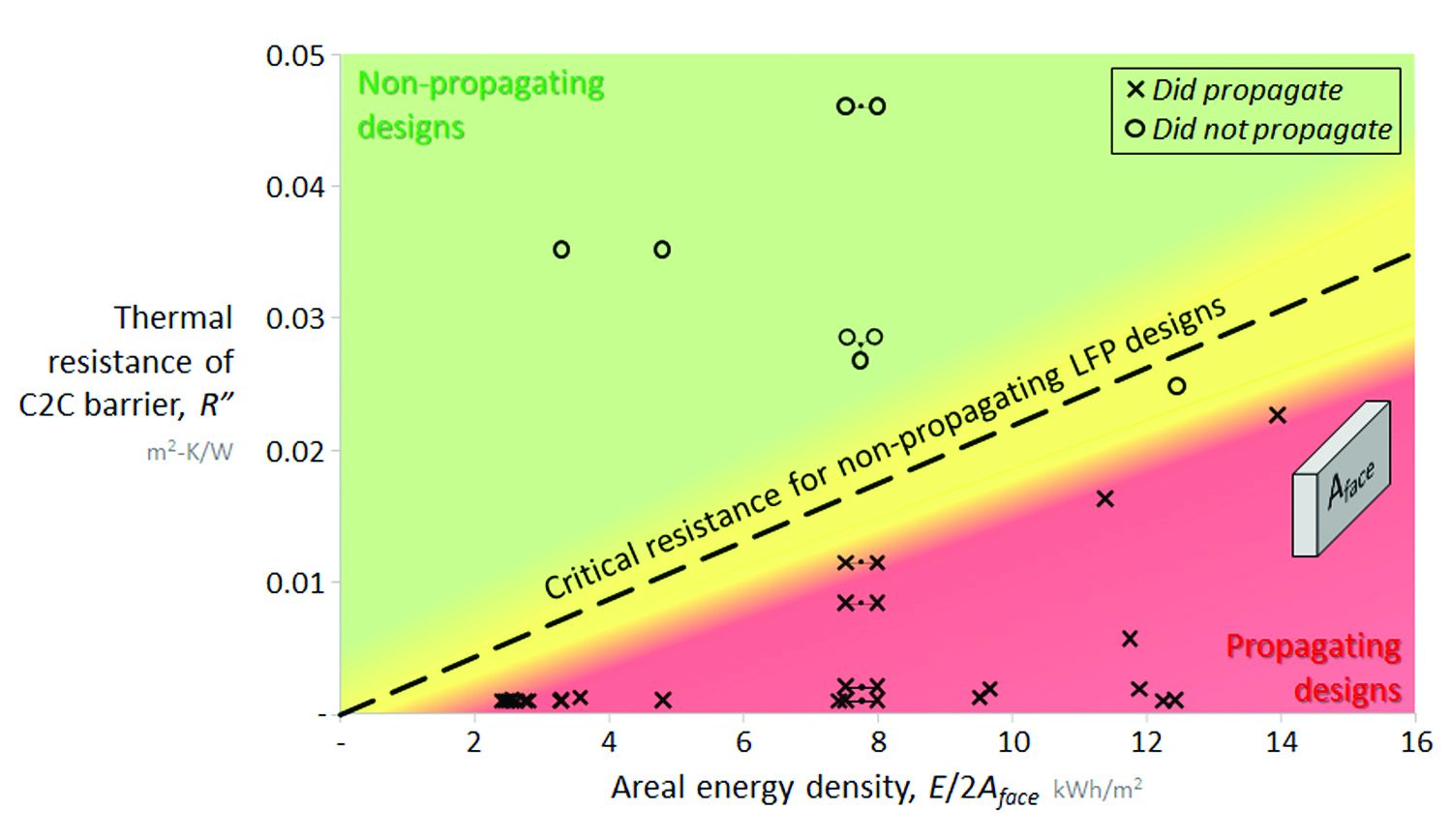New battery security laws regarding thermal runaway have prompted an evolution in pack design
In 2020, the Chinese language authorities issued GB 38031, a brand new nationwide security normal for electrical automobiles. It set a brand new requirement for automobile security through which passengers should obtain no less than a five-minute warning to exit the automobile if a battery thermal runaway occasion is detected. Earlier this yr, a revised normal was issued, which tightened these security necessities significantly. Whereas the five-minute egress rule nonetheless stands, the usual is now extra prescriptive round failure modes, testing, documentation and efficiency.
Thermal obstacles are one of many key applied sciences required to fulfill this normal. In pouch- or prismatic designs, thermal obstacles are sometimes positioned between every cell to function a firewall. If one cell goes into thermal runaway, thermal obstacles minimize off the cell-to-cell conduction that’s the first pathway for thermal power to journey. Thermal obstacles can’t cease the spark, however that may delay or forestall it from lighting the fuse. Whereas GB 38031-2025 doesn’t explicitly require thermal obstacles, it’s now a lot tougher to adjust to the usual with out them.
On the similar time, EV batteries are getting greater. Increased power densities, tighter packaging, and shorter design cycles imply there’s much less room — actually and figuratively — for error. To forestall a single-cell thermal runaway from propagating into adjoining cells, designers have to pack as a lot thermal resistance as attainable into the tiny gaps between cells. However how a lot is critical?
 It seems there’s a easy proportionality between the power content material of the cells, the cell-face space, and the crucial thermal resistance of the thermal barrier. That proportionality might be discovered by conducting a number of thermal runaway exams through which thermal obstacles of various thickness are trapped between two cells in an open-air atmosphere. By triggering one cell into thermal runaway and monitoring whether or not the opposite cell follows it, two populations might be recognized: propagating and non-propagating designs. These populations are separated by a boundary denoting the crucial thermal resistance beneath which thermal propagation will happen.
It seems there’s a easy proportionality between the power content material of the cells, the cell-face space, and the crucial thermal resistance of the thermal barrier. That proportionality might be discovered by conducting a number of thermal runaway exams through which thermal obstacles of various thickness are trapped between two cells in an open-air atmosphere. By triggering one cell into thermal runaway and monitoring whether or not the opposite cell follows it, two populations might be recognized: propagating and non-propagating designs. These populations are separated by a boundary denoting the crucial thermal resistance beneath which thermal propagation will happen.
This evaluation reveals that thicker, extra energetic cells require additional thermal resistance to forestall propagation by cell-to-cell warmth switch. When the identical sort of testing is performed on NMC cells, the same linear boundary exists however with a taller slope. Because of their decrease trigger- and better peak-temperatures throughout runaway, NMC designs can require 50-60% extra insulation for a pack of the identical power capability.
Aspen Aerogels’ engineers have an in-depth understanding of the complicated mechanisms of thermal runaway. They design PyroThin cell-to-cell obstacles with a system-level strategy to not solely deal with thermal propagation but additionally maintain cell well being and efficiency all through the pack’s lifecycle.


